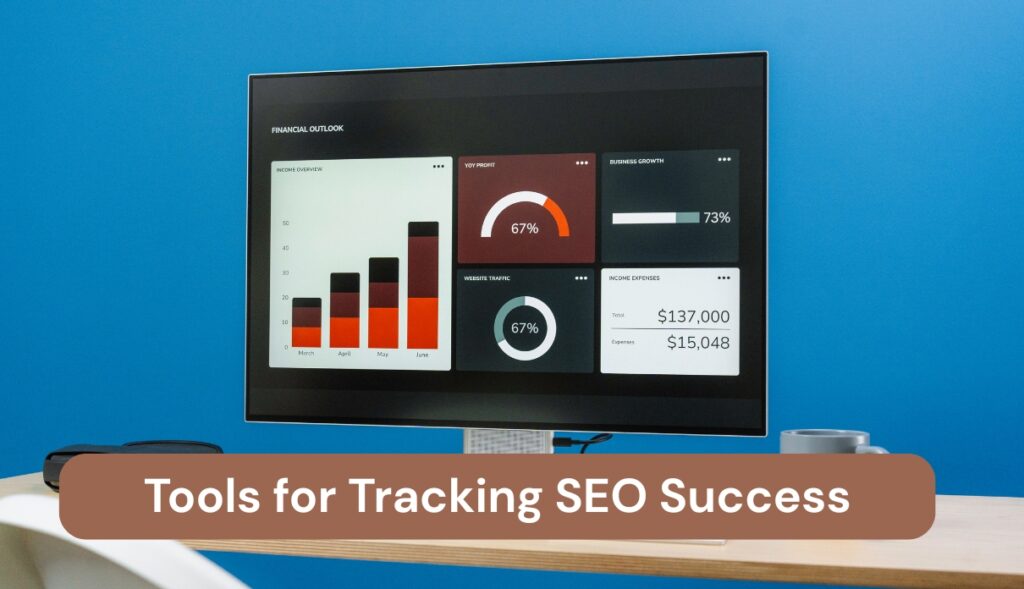- June 2, 2025
SEO Metrics: Measuring Your Success
Running a successful trade business means keeping track of what’s working and what isn’t. Just like you measure materials, time, and costs on every job, your digital marketing efforts need the same attention to detail. When it comes to search engine optimisation (SEO), understanding the right metrics can mean the difference between wasted marketing dollars and a steady stream of qualified leads.
For tradies across Australia, SEO isn’t just about ranking higher on Google – it’s about connecting with homeowners and businesses who need your expertise right when they’re searching for it. But how do you know if your SEO strategy is actually delivering results?
Why SEO Metrics Matter for Trade Businesses
Before diving into specific measurements, it’s crucial to understand why tracking SEO performance is essential for your trade business. Unlike traditional advertising where you pay for each ad placement, SEO builds long-term value. The work you put in today can continue generating leads months or even years down the track.
However, SEO success doesn’t happen overnight. It’s a gradual process that requires consistent monitoring and adjustment. Without proper measurement, you’re essentially working blind – unable to identify what’s driving business growth or where you need to focus your efforts.
Think of SEO metrics like the diagnostic tools in your toolkit. Just as you wouldn’t attempt to fix a complex electrical issue without proper testing equipment, you shouldn’t run digital marketing campaigns without understanding their performance data.
Essential SEO Metrics Every Tradie Should Track
Organic Traffic Growth
Your organic traffic represents visitors who find your website through unpaid search results. This metric serves as the foundation of your SEO success, showing how many potential customers are discovering your business naturally.
Monitor your organic traffic through Google Analytics, paying attention to both overall numbers and trends over time. Look for seasonal patterns that might affect your trade business – for instance, landscapers might see increased searches during spring, while heating specialists experience peaks during winter months.
Don’t just focus on total numbers. Examine which pages attract the most organic visitors and identify content that resonates with your target audience. This insight helps you create more effective content that addresses common customer questions and concerns.
Keyword Rankings and Visibility
Tracking your search engine rankings shows how visible your business is for relevant search terms. Focus on keywords that matter to your trade business, such as “plumber Melbourne,” “electrician near me,” or “roof repairs Brisbane.”
Use tools like Google Search Console to monitor your average position for important keywords. Remember that ranking improvements often happen gradually, so track changes over weeks and months rather than daily fluctuations.
Consider both head terms (broad keywords like “plumber”) and long-tail phrases (specific searches like “emergency blocked drain repair”). Long-tail keywords often convert better because they capture searchers with specific intent and immediate needs.
Local Search Performance
For trade businesses, local SEO metrics are particularly important since most customers search for services in their immediate area. Monitor your Google Business Profile performance, including how often your listing appears in local search results and map searches.
Track metrics like local search impressions, clicks, and calls generated through your Google Business Profile. Pay attention to search queries that trigger your listing – these reveal exactly what potential customers are looking for when they find your business.
Local citation consistency across directories also impacts your local search performance. Ensure your business name, address, and phone number are identical across all online platforms where your business is listed.
Click-Through Rates from Search Results
Your click-through rate (CTR) measures how often people click on your website link when it appears in search results. A low CTR might indicate that your page titles and descriptions don’t effectively communicate your value proposition to potential customers.
Experiment with different title tags and meta descriptions to improve your CTR. For trade businesses, including location-specific information and clear service descriptions often improves click-through rates. For example, “Licensed Electrician Sydney | Same-Day Service | Free Quotes” is more compelling than just “Electrical Services Sydney.”
Monitor CTR data in Google Search Console, focusing on pages with high impressions but low click-through rates. These represent opportunities to capture more traffic from existing visibility.
Conversion Rates and Lead Quality
Traffic alone doesn’t pay the bills – you need visitors who become paying customers. Track conversion rates for key actions on your website, such as phone calls, contact form submissions, or quote requests.
Set up goal tracking in Google Analytics to measure these conversions accurately. For trade businesses, phone calls are often the most valuable conversion, so implement call tracking to understand which SEO efforts generate the most phone leads.
Assess lead quality alongside quantity. A hundred website visitors who never contact you are less valuable than fifty visitors where ten become paying customers. Focus on attracting the right audience rather than just maximizing traffic volume.
Page Loading Speed and User Experience
Website performance directly impacts both user satisfaction and search engine rankings. Monitor your site’s loading speed using tools like Google PageSpeed Insights or GTmetrix.
For trade businesses, slow-loading websites can be particularly damaging since many potential customers search on mobile devices while dealing with urgent issues. A homeowner with a burst pipe won’t wait for a slow website to load – they’ll move on to your competitor.
Pay attention to Core Web Vitals, Google’s user experience metrics that include loading performance, interactivity, and visual stability. Poor performance in these areas can negatively impact your search rankings.
Mobile Search Performance
With more than half of local searches happening on mobile devices, monitoring your mobile SEO performance is crucial. Use Google Search Console to compare your performance across desktop and mobile searches.
Ensure your website provides an excellent mobile experience, with easy-to-tap phone numbers, clear service descriptions, and simple contact forms. Many trade business websites lose potential customers due to poor mobile optimization.
Consider mobile-specific search behaviors when analyzing your data. Mobile users often search with different keywords and have higher intent to take immediate action, such as making a phone call.
Tools for Tracking SEO Success

Google Analytics and Search Console
These free Google tools provide comprehensive insights into your website performance. Google Analytics shows visitor behavior and conversion data, while Search Console reveals how your site performs in search results.
Set up custom dashboards that focus on metrics most relevant to your trade business. Create reports that you can easily review monthly to track progress and identify trends.
Local SEO Tracking Tools
Consider specialized tools for monitoring local search performance. Many platforms offer features specifically designed for service-based businesses, including local rank tracking and review monitoring.
Some tools also provide competitor analysis, showing how your local search performance compares to other trade businesses in your area.
Setting Realistic SEO Goals and Expectations
SEO success for trade businesses typically takes three to six months to show significant results. Set realistic monthly goals based on your current performance and market conditions.
Focus on consistent improvement rather than dramatic overnight changes. Small, steady gains in rankings and traffic often lead to more sustainable long-term growth than quick spikes followed by drops.
Consider seasonal factors affecting your trade business when setting goals. A pool maintenance company might see different SEO performance during summer versus winter months.
Common SEO Measurement Mistakes to Avoid
Don’t focus solely on rankings for competitive keywords. While ranking first for “plumber Sydney” would be excellent, you might generate more business from specific phrases like “emergency pipe repair Inner West Sydney.”
Avoid measuring success based only on traffic increases. Quality traffic that converts to leads and customers is more valuable than high visitor numbers with poor conversion rates.
Don’t expect immediate results or panic over short-term fluctuations. SEO performance naturally varies, and search engine algorithm updates can cause temporary ranking changes.
Making Data-Driven Improvements
Use your SEO metrics to inform content creation and website improvements. If certain pages generate high traffic but low conversions, optimize those pages to better capture leads.
Identify your most successful content and create similar resources. If a blog post about “common plumbing emergencies” drives significant traffic and leads, consider expanding that topic with additional detailed guides.
Regular monitoring and adjustment based on performance data ensures your SEO strategy continues delivering results for your trade business. Remember, successful SEO is an ongoing process rather than a one-time project.
By consistently tracking these essential metrics and making data-driven improvements, you’ll build a stronger online presence that generates more qualified leads and grows your trade business sustainably.


